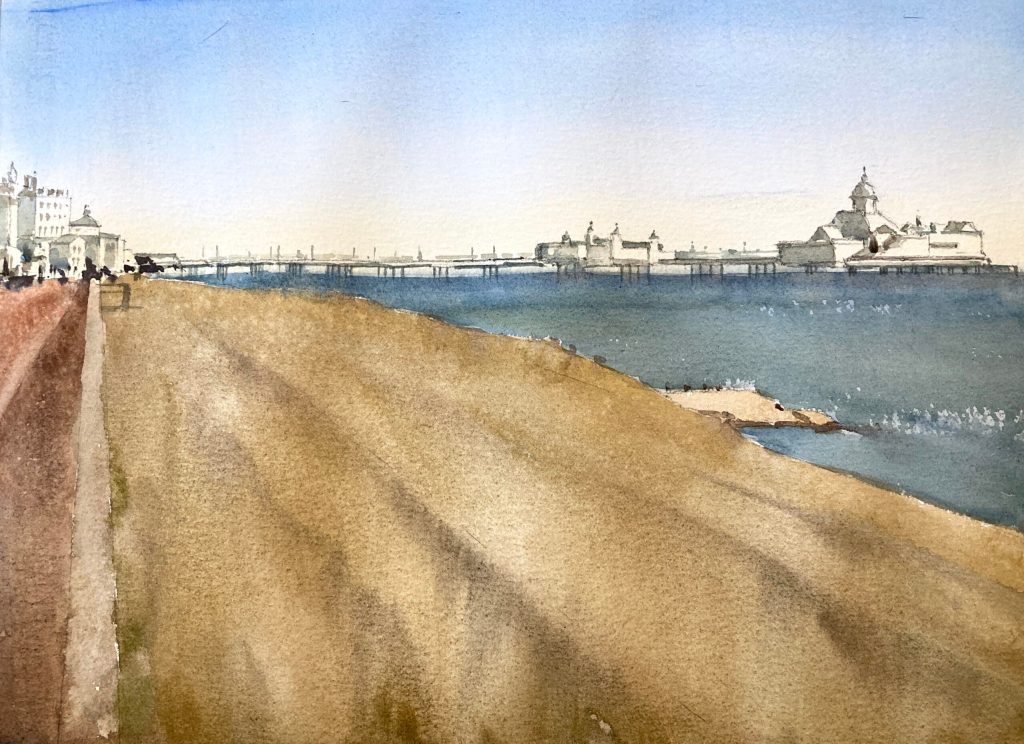A beach watercolor painting is always popular and fun to paint. There are some gotchas to look out for however, and this is what you need to do.
Beach Paintings – Sand Isn’t Often Yellow
It’s really tempting to look at a sandy beach and confidently reach for the yellow or the yellow ochre. However if we look closely that isn’t the case. If we isolate the color we can suddenly see that sand is actually often a very grayed out almost beige color. It’s only when it’s painted next to the blue of the sea that it starts to read as yellow. Now in this painting I’ve somewhat overdone the yellow even though I tried not to! Have a look at these paintings of Manchester by-the-sea to see what I mean.
Don’t Overcomplicate Water in your Watercolor Beach Painting
Now there are lot of really good seascape painters. Fredrick Judd Waugh is one of my faves. And they really do go to town on waves and breakers and spray. But in a scene like this it’s really not necessary. Now if the sea was the main element in the picture then that would be a different matter. But here we have the sand, the pier (which is really the main focus), and the buildings. All of these have a lot of detail and fiddly bits. Trying to put waves and hundreds of different value changes into the sea would just overwhelm the painting.
Daily Painting Doesn’t Always End in Success
Well this Eastbourne watercolor painting was meant to be a quick and easy one but it didn’t turn out that way. It’s great on these daily paintings to try new things but that also means the failure rate increases. Day 12 of 30 in 30 – almost half way through!

